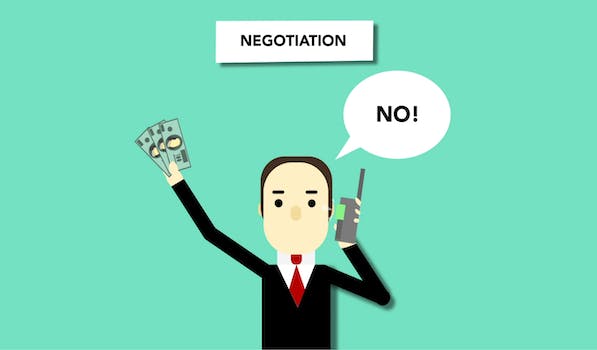How To Start A Business Proposal Presentation
“Craft a compelling pitch and secure your success with these tips for starting a business proposal presentation.”
Introduction
When it comes to starting a business proposal presentation, it’s important to make a strong first impression. The introduction sets the tone for the rest of the presentation and can make or break your chances of success. In this guide, we’ll explore some tips and best practices for crafting an effective introduction that will capture your audience’s attention and set the stage for a successful presentation.
Crafting an Effective Introduction
Starting a business proposal presentation can be a daunting task, especially if you are not sure where to begin. However, with the right approach, you can create an effective introduction that will capture your audience’s attention and set the tone for the rest of your presentation. In this article, we will discuss some tips on how to start a business proposal presentation and craft an effective introduction.
The first step in crafting an effective introduction is to understand your audience. Who are they? What are their needs and interests? What do they already know about your business or industry? By answering these questions, you can tailor your introduction to your audience and make it more engaging and relevant.
Once you have a clear understanding of your audience, you can start thinking about the content of your introduction. A good introduction should grab your audience’s attention, establish your credibility, and provide a clear overview of what you will be discussing in your presentation.
One effective way to grab your audience’s attention is to start with a compelling story or anecdote. This can be a personal experience, a case study, or a relevant news story. By starting with a story, you can create an emotional connection with your audience and make your presentation more memorable.
Another way to establish your credibility is to provide some background information about your business or industry. This can include your company’s history, mission statement, or key achievements. By highlighting your expertise and experience, you can build trust with your audience and make them more receptive to your ideas.
Finally, you should provide a clear overview of what you will be discussing in your presentation. This can include a brief outline of your main points or a summary of your key findings. By providing a roadmap for your presentation, you can help your audience stay engaged and focused throughout your presentation.
In addition to these tips, there are some other things to keep in mind when crafting your introduction. First, be concise and to the point. Your introduction should be no more than a few minutes long, so make every word count. Second, use visuals and multimedia to enhance your presentation. This can include images, videos, or infographics that help illustrate your points and make your presentation more engaging. Finally, practice your introduction before you deliver it. This will help you feel more confident and comfortable when you are presenting, and ensure that your introduction flows smoothly and effectively.
In conclusion, starting a business proposal presentation can be challenging, but with the right approach, you can create an effective introduction that will capture your audience’s attention and set the tone for the rest of your presentation. By understanding your audience, crafting a compelling story, establishing your credibility, and providing a clear overview of your presentation, you can create an introduction that will make your presentation more engaging and memorable. So, take the time to plan and practice your introduction, and you will be well on your way to delivering a successful business proposal presentation.
Identifying the Problem and Offering Solutions

Starting a business proposal presentation can be a daunting task, especially if you are new to the world of entrepreneurship. However, with the right approach, you can create a compelling proposal that will impress potential investors and clients. In this article, we will discuss how to identify the problem and offer solutions in your business proposal presentation.
The first step in creating a successful business proposal is to identify the problem that your product or service solves. This is the foundation of your proposal and should be the focus of your presentation. Start by researching your target market and identifying their pain points. What problems do they face that your product or service can solve? Once you have identified the problem, you can begin to offer solutions.
When offering solutions, it is important to be specific and detailed. Explain how your product or service will solve the problem and what benefits it will provide to the customer. Use data and statistics to support your claims and show that your solution is effective. It is also important to address any potential objections or concerns that the customer may have. Anticipate their questions and provide answers in your presentation.
Another important aspect of offering solutions is to differentiate yourself from the competition. What makes your product or service unique? How does it stand out from similar offerings in the market? Highlight your competitive advantage and explain why customers should choose your solution over others.
In addition to offering solutions, it is important to show the potential return on investment (ROI) for the customer. This can be done by providing a cost-benefit analysis or demonstrating how your solution will save the customer time, money, or resources. Show that your solution is a wise investment that will provide long-term benefits.
When presenting your solutions, it is important to keep the customer’s needs and preferences in mind. Use language that is easy to understand and avoid technical jargon. Use visuals such as graphs, charts, and images to illustrate your points and make your presentation more engaging. Be confident and enthusiastic about your solution, but also be open to feedback and questions from the customer.
In conclusion, identifying the problem and offering solutions is a crucial part of any business proposal presentation. By researching your target market, being specific and detailed in your solutions, differentiating yourself from the competition, and showing the potential ROI for the customer, you can create a compelling proposal that will impress potential investors and clients. Remember to keep the customer’s needs and preferences in mind, use visuals to illustrate your points, and be confident and enthusiastic about your solution. With these tips, you can start your business proposal presentation on the right foot and increase your chances of success.
Presenting Your Unique Value Proposition
Starting a business proposal presentation can be a daunting task, especially if you are not sure where to begin. However, with the right approach, you can create a compelling presentation that will capture the attention of your audience and help you win new business. In this article, we will discuss how to present your unique value proposition in a business proposal presentation.
The first step in presenting your unique value proposition is to understand what it is. Your unique value proposition is the unique benefit that your product or service provides to your customers. It is what sets you apart from your competitors and makes you the best choice for your target market. To identify your unique value proposition, you need to understand your customers’ needs and how your product or service meets those needs better than anyone else.
Once you have identified your unique value proposition, you need to communicate it clearly and effectively in your business proposal presentation. The best way to do this is to use a simple and concise message that highlights the benefits of your product or service. Your message should be easy to understand and memorable, so that your audience can easily recall it after the presentation.
To help you communicate your unique value proposition, you can use visual aids such as charts, graphs, and images. These visual aids can help you illustrate your message and make it more engaging for your audience. However, it is important to use visual aids sparingly and only when they add value to your presentation.
Another important aspect of presenting your unique value proposition is to provide evidence to support your claims. This can include customer testimonials, case studies, and data that demonstrates the effectiveness of your product or service. By providing evidence, you can build credibility and trust with your audience, which can help you win new business.
In addition to presenting your unique value proposition, it is also important to address any objections or concerns that your audience may have. This can include addressing common misconceptions about your product or service, or addressing concerns about pricing or implementation. By addressing these objections, you can help your audience feel more confident in your product or service and increase the likelihood of winning new business.
Finally, it is important to end your business proposal presentation with a clear call to action. This can include asking for the sale, scheduling a follow-up meeting, or requesting feedback from your audience. By ending your presentation with a clear call to action, you can help your audience take the next step in the sales process and move closer to becoming a customer.
In conclusion, presenting your unique value proposition is an essential part of any business proposal presentation. By understanding your customers’ needs, communicating your message clearly and effectively, providing evidence to support your claims, addressing objections and concerns, and ending with a clear call to action, you can create a compelling presentation that will help you win new business. With these tips in mind, you can start your business proposal presentation with confidence and increase your chances of success.
Outlining Your Business Plan and Financial Projections
Starting a business proposal presentation can be a daunting task, especially if you are new to the world of entrepreneurship. However, with the right approach and preparation, you can create a compelling presentation that will impress potential investors and partners. In this article, we will guide you through the process of outlining your business plan and financial projections, which are essential components of any successful business proposal.
The first step in creating a business proposal presentation is to outline your business plan. This should include a clear description of your business idea, your target market, and your unique selling proposition. You should also include information about your industry, competitors, and any relevant trends or challenges that may impact your business.
Once you have outlined your business plan, it is time to focus on your financial projections. This is where you will provide detailed information about your revenue streams, expenses, and profitability. You should also include information about your funding needs, such as how much money you need to start your business and how you plan to use the funds.
When outlining your financial projections, it is important to be realistic and conservative. Investors and partners will want to see that you have a solid understanding of your business and that you have thought through all of the potential risks and challenges. You should also be prepared to answer questions about your financial projections, such as how you arrived at your revenue and expense estimates and what assumptions you made.
In addition to outlining your business plan and financial projections, you should also consider including a SWOT analysis in your business proposal presentation. This is a tool that can help you identify your business’s strengths, weaknesses, opportunities, and threats. By including a SWOT analysis, you can demonstrate that you have a clear understanding of your business and that you are prepared to address any challenges that may arise.
When creating your business proposal presentation, it is important to keep in mind that your audience may have limited time and attention. Therefore, it is important to be concise and to the point. You should also use visuals, such as charts and graphs, to help illustrate your points and make your presentation more engaging.
Finally, it is important to practice your presentation before you deliver it. This will help you feel more confident and prepared, and it will also give you an opportunity to identify any areas that may need improvement. You should also be prepared to answer questions and address any concerns that your audience may have.
In conclusion, starting a business proposal presentation can be a challenging but rewarding experience. By outlining your business plan and financial projections, including a SWOT analysis, and practicing your presentation, you can create a compelling proposal that will impress potential investors and partners. Remember to be realistic and conservative in your financial projections, and to keep your presentation concise and engaging. With these tips in mind, you can take the first step towards turning your business idea into a reality.
Closing with a Strong Call to Action
Starting a business proposal presentation can be a daunting task, especially if you are not sure where to begin. However, with the right approach, you can create a compelling presentation that will impress your audience and help you achieve your business goals. In this article, we will discuss how to close your business proposal presentation with a strong call to action.
A call to action is a statement that encourages your audience to take a specific action. In the context of a business proposal presentation, your call to action should be designed to persuade your audience to take the next step in the sales process. This could be anything from scheduling a follow-up meeting to signing a contract.
The first step in creating a strong call to action is to clearly define the action you want your audience to take. This should be based on the goals of your presentation and the needs of your audience. For example, if you are presenting a proposal for a new product, your call to action might be to schedule a product demo or to place an order.
Once you have defined your call to action, you need to make it clear to your audience what they need to do to take that action. This could involve providing contact information, outlining the steps involved in the sales process, or offering a special promotion or discount.
One effective way to make your call to action more compelling is to create a sense of urgency. This could involve highlighting a limited-time offer or emphasizing the benefits of taking action quickly. For example, you might say something like, “Don’t miss out on this opportunity to increase your sales and improve your bottom line. Schedule your product demo today!”
Another key element of a strong call to action is to make it easy for your audience to take the desired action. This could involve providing a clear and simple process for scheduling a follow-up meeting or placing an order, or offering online resources or support to help your audience take the next step.
Finally, it is important to follow up on your call to action. This could involve sending a follow-up email or making a phone call to check in with your audience and answer any questions they may have. By following up on your call to action, you can demonstrate your commitment to your audience and build trust and credibility.
In conclusion, closing your business proposal presentation with a strong call to action is essential for achieving your sales goals and building strong relationships with your audience. By defining your call to action, making it clear and compelling, creating a sense of urgency, making it easy for your audience to take action, and following up, you can create a powerful and effective presentation that will help you achieve success in your business. So go ahead and start planning your next business proposal presentation today!
Conclusion
Conclusion: Starting a business proposal presentation can be a daunting task, but with proper planning and preparation, it can be a successful and effective way to pitch your business idea. Remember to clearly define your business concept, target audience, and unique selling proposition. Use visual aids and data to support your proposal and practice your presentation to ensure a confident delivery. With these tips in mind, you can create a compelling business proposal presentation that will impress potential investors and partners.





